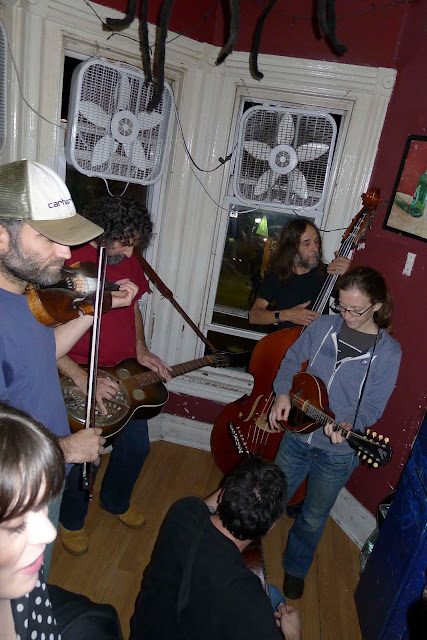Philadelphia, PA 19104
(215) 387-2424
Website
Ethiopian food has a cult-like following. It’s safe to say that Washington DC is the North American hotbed of this cuisine, with an unofficial estimate of 5/6ths of the Ethiopian-American population residing there. That said, we have our own population (unknown estimation) in Philadelphia dedicated to the unique and flavorful fare.
In our fair city, the city of brotherly love, it is well known that West Philly is the Mecca of Ethiopian culinary establishments. One place, in particular, stands out ahead of the pack, notably for its interesting blend of hipster hole-in-the-wall meets authentic-yet-lackluster Ethiopian restaurant – with the former above and the latter below, but not in any measure of quality. I’ll explain later.
When you break it down to its most basic, you can sum Ethiopian food up with two words, injera and wat. Most everything comes in a thick stew (wat), usually served atop a giant piece of spongy bread (injera). This can be both good and bad. It’s great if you are comfortable eating with your hands, and are not grossed out by the people/friends with whom you are sharing the meal. It’s terrible if you end up with some dirty finger-nailed, picky eater, someone who is questioning the cleanliness of the kitchen and/or anyone who isn’t into trying some raw beef.
According to the website, they’re the self-proclaimed “best Ethiopian food in town” and with the added bonus of a fully loaded boutique bar on the second floor, it’s a sure bet for a satisfied appetite and a night full of intimate, live music enjoyment.
But before the music, there is food. It’s generally understood that you get your hands into some injera and wat prior to hitting Fiume – and with good reason, as Abyssinia is literally the ground floor. You have to pass through the restaurant to even reach the venue. This strange juxtaposition has two worlds colliding, with a charmingly dingy, extremely ethnic restaurant, meeting a secret upstairs hipster bar that is one part Portlandia, one part Ann Frank. It’s an experience, to say the least. So when you’re ready for the tour de force, here is what to do.
First floor. Order a beer. Hoppy beer works well with the smack-you-in-the-mouth flavors and spices of Ethiopian cuisine, but anything cold will do. Make sure you have some water, because this is going to make you sweat.
I prefer to get one of the vegetarian combination platters, and intersperse one or two of the other meat-types with it. Each item is completely different, yet all work well together.
Lest I forget, the most important part, the injera. This sour, spongy bread is the main event at any Ethiopian meal. Your entire order will be served on a comically large plate, with a giant piece of injera draped over it, which will serve as your utensils. Simply pull off a piece, and use your thumb and forefingers to pinch whatever your heart desires.
The vegetarian combination (#26 on the menu) is a spattering of two types of split peas in berbere - a traditional Ethiopian spice blend including chili, garlic, ginger, basil, fenugreek and black pepper - sauce with onions (#18 Shiro Wot and #20 Ye'Kik Alicha);
Miscellaneous sauteed, mixed vegetables (#17 Ye'Atikilt Wot);
Two types of lentils in berbere sauce (#16 Y'Misir Wot and #22 Azifa); and sauteed collard greens (#19 Ye'Gomen Wot). There isn't much of each, but together, with the difference in spices, all you need is a tiny hint of each in your food scoop.
You must try the Kitfo, as this is the barometer used to judge just how good an Ethiopian place is. Kitfo is basically a tartar: minced raw beef marinated in mitmita, which is a spice blend found in many Ethiopian dishes, consisting of ground African birdseye chili peppers, cardamom seed, cloves and salt. While you may be a bit squeamish about eating raw beef from a place that looks less than spic and span, just give it a shot. The mincing of the beef really makes it tender, and the wallop of the pungent spices explodes on your palate. This particular version is served with collard greens (gomen) and ayib, a spiced cottage cheese.
We also tried another type of raw beef (#4 Gored Gored) cubes prepared with a blend of spices including berbere sauce, and mixed in clarified butter. There were definitely chewy hunks in the mix, not as tender as the minced bits of Kitfo, so be ready to swallow whole. Not a recommended selection.
To round out the veggies and raw beef(s), we added a third meat with the lamb stew (#10 Yebeg Qey Wot) cooked in, you guessed it, a berbere sauce with "other spices."
The pieces of lamb were actually pretty tender.
You have now experienced Ethiopian food. Try to stop sweating.
But you can’t, because now you head upstairs to Fiume, where you’ll cram into 150 square feet with 30 other people to enjoy the live music and specialty beverages. Pick your poison: Sundays with Shakey Lymon (blues), Perseverance Jazz Band (traditional jazz), & OctoMonkey (gypsy/django jazz) or Thursdays at 10pm the Citywide Specials (starring manager Kevin himself) perform live traditional bluegrass music.
One of the added benefits of having both a restaurant and a venue, is that you can tailor your evening to your mood. Want to sit at a bar and listen to a Fred Armisen lookalike wax poetically about which house-infused cocktail ingredients they are offering that day? Hit Fiume early (where you can also eat food from downstairs). More in the mood for a slightly strange meal at your Ethiopian neighbor’s house? Sit downstairs at Abyssinia.
But above all, stay for the music.




















No comments:
Post a Comment